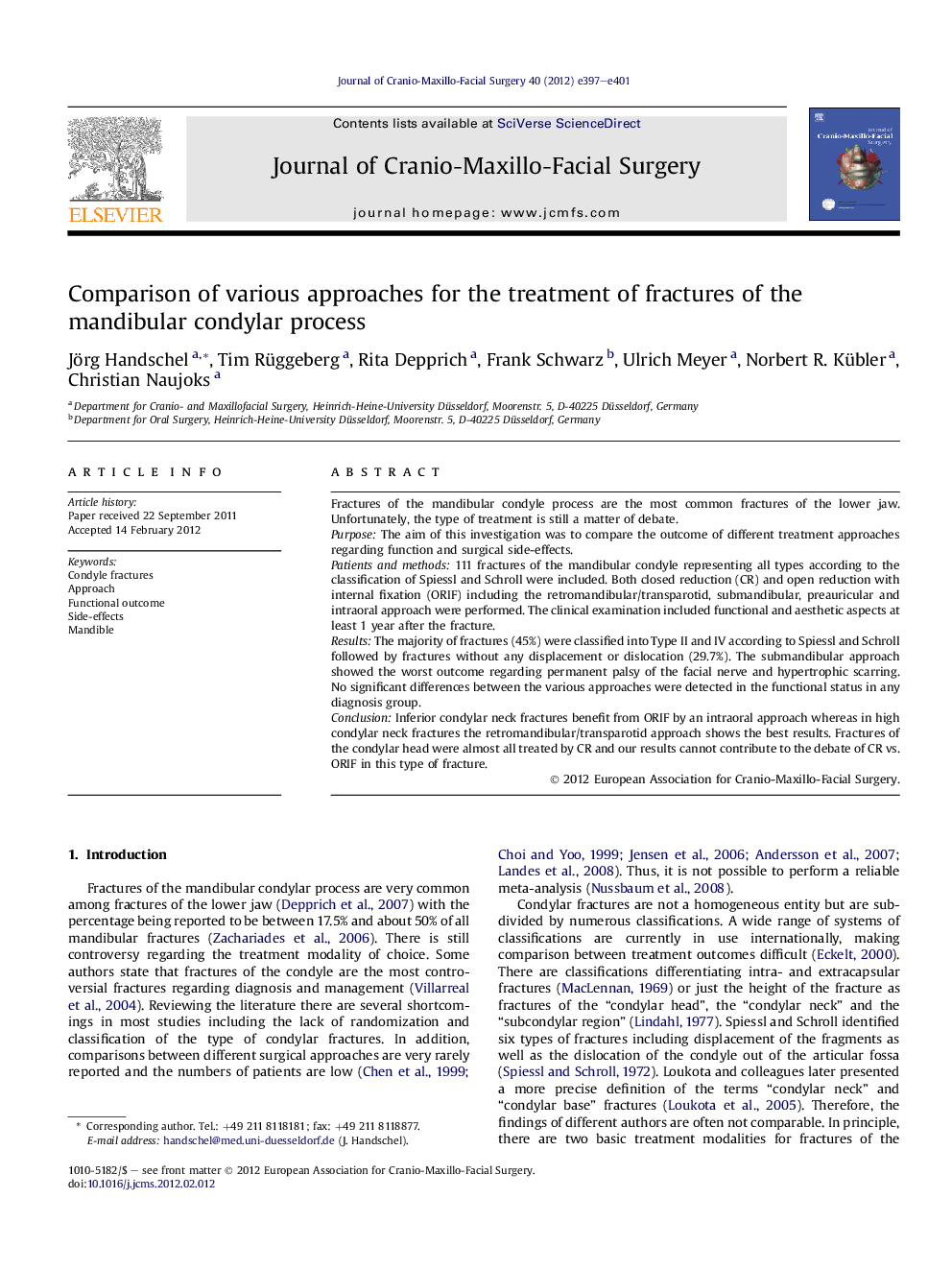| Article ID | Journal | Published Year | Pages | File Type |
|---|---|---|---|---|
| 3143423 | Journal of Cranio-Maxillofacial Surgery | 2012 | 5 Pages |
Fractures of the mandibular condyle process are the most common fractures of the lower jaw. Unfortunately, the type of treatment is still a matter of debate.PurposeThe aim of this investigation was to compare the outcome of different treatment approaches regarding function and surgical side-effects.Patients and methods111 fractures of the mandibular condyle representing all types according to the classification of Spiessl and Schroll were included. Both closed reduction (CR) and open reduction with internal fixation (ORIF) including the retromandibular/transparotid, submandibular, preauricular and intraoral approach were performed. The clinical examination included functional and aesthetic aspects at least 1 year after the fracture.ResultsThe majority of fractures (45%) were classified into Type II and IV according to Spiessl and Schroll followed by fractures without any displacement or dislocation (29.7%). The submandibular approach showed the worst outcome regarding permanent palsy of the facial nerve and hypertrophic scarring. No significant differences between the various approaches were detected in the functional status in any diagnosis group.ConclusionInferior condylar neck fractures benefit from ORIF by an intraoral approach whereas in high condylar neck fractures the retromandibular/transparotid approach shows the best results. Fractures of the condylar head were almost all treated by CR and our results cannot contribute to the debate of CR vs. ORIF in this type of fracture.
